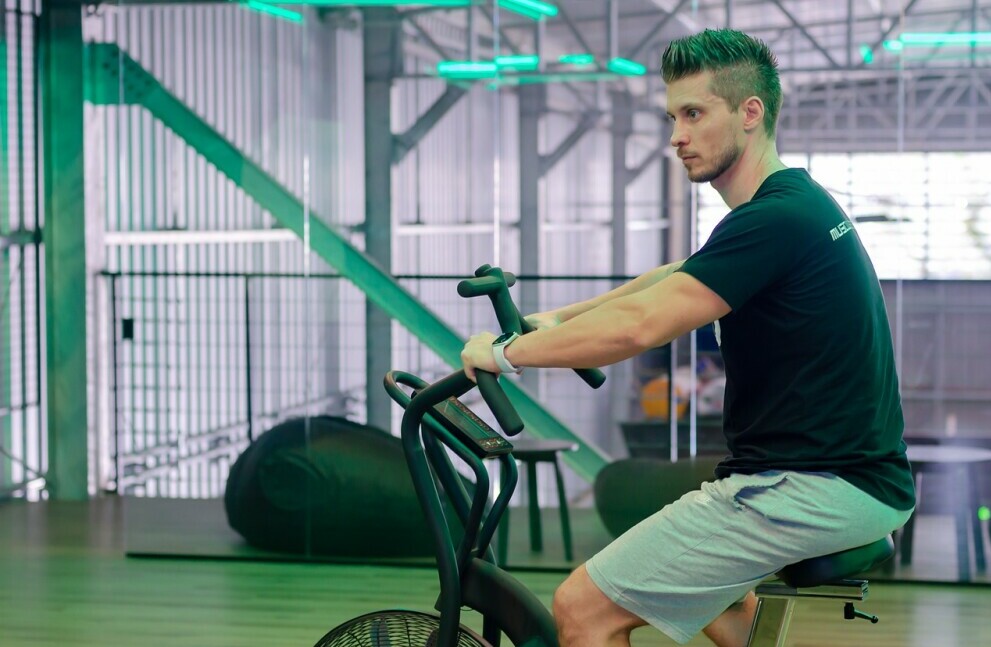If you’re new to the fitness world, you might be wondering about low impact cardio and why it’s a recommended starting point for beginners. Low impact cardio refers to exercises that minimize the stress placed on your joints. Unlike high impact activities like running or jumping, these workouts ensure one foot always remains on the ground or in the water, reducing the risk of injury.

Now, why is low impact cardio crucial for beginners? It serves several essential functions. First, it’s approachable, allowing you to ease into a fitness routine without feeling intimidated. Second, it promotes cardiovascular health by improving blood circulation and heart function—key components to overall wellness. Lastly, low impact exercises such as walking or cycling can also aid in weight management as part of a balanced lifestyle.
Distinguishing between low and high impact workouts is vital in managing expectations and avoiding unnecessary strain. High impact workouts involve more jumping and running, typically leading to faster calorie burn and increased bone density. However, they may not be suitable for everyone, especially if you have existing joint issues or are recovering from an injury. Low impact exercises provide a safer and more sustainable approach to get moving and start building stamina and strength.
Following the premise of starting low and slow, in the next section, ‘Kickstarting Your Journey: Low Impact Cardio Options’, you’re going to find out about various exercises that are gentle on the body yet incredibly effective for cardiovascular health. From the basics of walking to the immersive experience of swimming, there’s a plethora of activities to choose from that will cater to your preferences and set the foundation for a healthier you.
Kickstarting Your Journey: Low Impact Cardio Options
Starting a new workout regime can be daunting, but low impact cardio offers a variety of options that are as enjoyable as they are effective. The beauty of low impact exercises is that they minimize stress on the joints while still getting your heart rate up, making them perfect for beginners or those with joint sensitivities. Let’s explore some of the most accessible and beginner-friendly low impact cardio workouts you can dive into.
Walking is one of the easiest ways to get moving without overwhelming your body. It’s something you can do anywhere, whether it’s a brisk walk around your neighborhood or a leisurely stroll in the park. It burns calories, improves mood, and strengthens your heart, all without the need for special equipment or a gym membership.
Swimming is a fantastic full-body workout that keeps weight off your joints while providing resistance that helps build muscle. It’s not just about laps; water aerobics and other aquatic exercises are both fun and challenging, ensuring you can work out your entire body without any harsh impact.
Cycling, whether stationary or outdoors, is a stellar choice for low impact cardio. It allows you to adjust the intensity as per your comfort level while still giving your lower body a great workout. The best part? As your fitness level improves, you can always take on more challenging terrain or longer distances.
Elliptical training is another joint-friendly option that’s popular in gyms worldwide. It’s a solid choice because it mimics the motion of running but without the hard impact on your knees and ankles. Moreover, many elliptical machines offer adjustable resistance and incline options, so you can keep challenging yourself as you get fitter.
Creating a Sustainable Routine
If you’re venturing into the world of low impact cardio, figuring out how often to get moving can be a puzzle. Don’t worry too much about carving out hours each day; consistency is key. I’d recommend you aim for at least 150 minutes of moderate aerobic activity a week. That’s going to include any mix of walking, swimming, or your chosen activities from our previous discussion.
You might be wondering about strength training, and that’s a great question. It’s pivotal for a well-rounded fitness routine. Try to weave in some form of resistance exercise a couple of times a week. This combo enhances muscle strength and supports the joints you’re caring for with low impact cardio.
Mobility shouldn’t be overlooked either. Incorporating flexibility and balance exercises, like yoga or Pilates, can work wonders. These practices boost your core strength, balance, and flexibility, all of which contribute to your overall well-being and stamina for cardio workouts.
Now, about goals. Set realistic ones. It’s better to notch up small wins regularly than to aim too high and struggle. Use a fitness tracker or an app, if you’re comfortable with gadgets, to monitor your development. Remember, this isn’t just about ticking boxes; it’s also about enjoying your progress.
Your first attempt doesn’t need to be your last. Too easy? Step up the challenge. Too hard? It’s okay to dial it back. Workouts should evolve with you, so you can always adjust your approach down the road. Choose something that resonates with you, and you’ll find sticking to it much more manageable.
Enhancing Your Workout: Tips and Tricks for Success
Now you’ve got a handle on low impact cardio, and you’ve started to build it into your routine. I’m going to help you fine-tune your workouts to get even more from them. First, don’t worry too much about making big leaps in intensity or duration. Small, incremental changes can lead to significant improvements over time. This isn’t just about doing more; it’s about doing it smarter.
Staying hydrated and properly nourished is crucial. Your body needs fuel to perform and recover, so choose something that resonates with you—whether it’s a hydrating sports drink or a nutrient-packed snack. Just remember, no single diet works for everyone. You can always adjust your approach down the road.
Listen to what your body is telling you. If something hurts or doesn’t feel right, give it the attention it deserves. Your first attempt doesn’t need to be your last. There’s a lot of opportunity in understanding your body’s signals and responding appropriately.
Finally, find a community. Whether it’s an online group or a local class, a like-minded support network can be a goldmine for motivation, advice, and camaraderie. Guess what? They’re probably looking for someone just like you. This includes both beginners and seasoned exercisers – everyone started somewhere.
Just don’t focus too much on perfection. I really hope that you enjoy the journey of building healthier habits and that you find joy in the movement itself. It’s not just about the end results—it’s also about the small victories along the way. Thanks for taking the time to read this, and I’d love to hear your feedback. Choose to move, and you’re already on the path to success.

Hi Jerry,
Talking about beginner-friendly, low-impact cardio exercises starts a crucial discussion about how to begin fitness journeys in a sustainable and injury-prevention manner. It raises several essential queries:
How can people who have lived primarily sedentary lives or have persistent joint problems be motivated to begin and continue low-impact aerobic exercise?
How can community and support networks help beginners become a regular part of their lifestyle by enabling them to begin these low-impact cardio exercises and continue them over time?
These questions must be answered to promote a culture that values health and wellness in an approachable and inclusive way and inspires more people to start living healthier lifestyles.
Hi Sara,
Thank you for bringing up such important points! Motivating individuals with sedentary lifestyles or joint issues to start and stick with low-impact aerobic exercises is indeed crucial for fostering a healthier society.
To address the first query, motivation can stem from personalized goal-setting and emphasizing the benefits of even small steps towards fitness. Highlighting success stories of individuals with similar challenges can also inspire confidence. Additionally, incorporating enjoyable activities and varying routines can make exercise more enticing.
Community and support networks play a pivotal role in the second query. Creating inclusive and supportive environments where beginners feel encouraged and accepted can significantly boost their commitment to fitness. This could involve group classes tailored to different fitness levels, buddy systems for accountability, and online forums for sharing experiences and tips.
By tackling these questions and fostering a culture that prioritizes health and wellness inclusively, we can empower more people to embark on and sustain their fitness journeys. Let’s continue the conversation and work towards making healthier lifestyles accessible to all. #FitnessJourney #Inclusivity #HealthAndWellness
Jerry